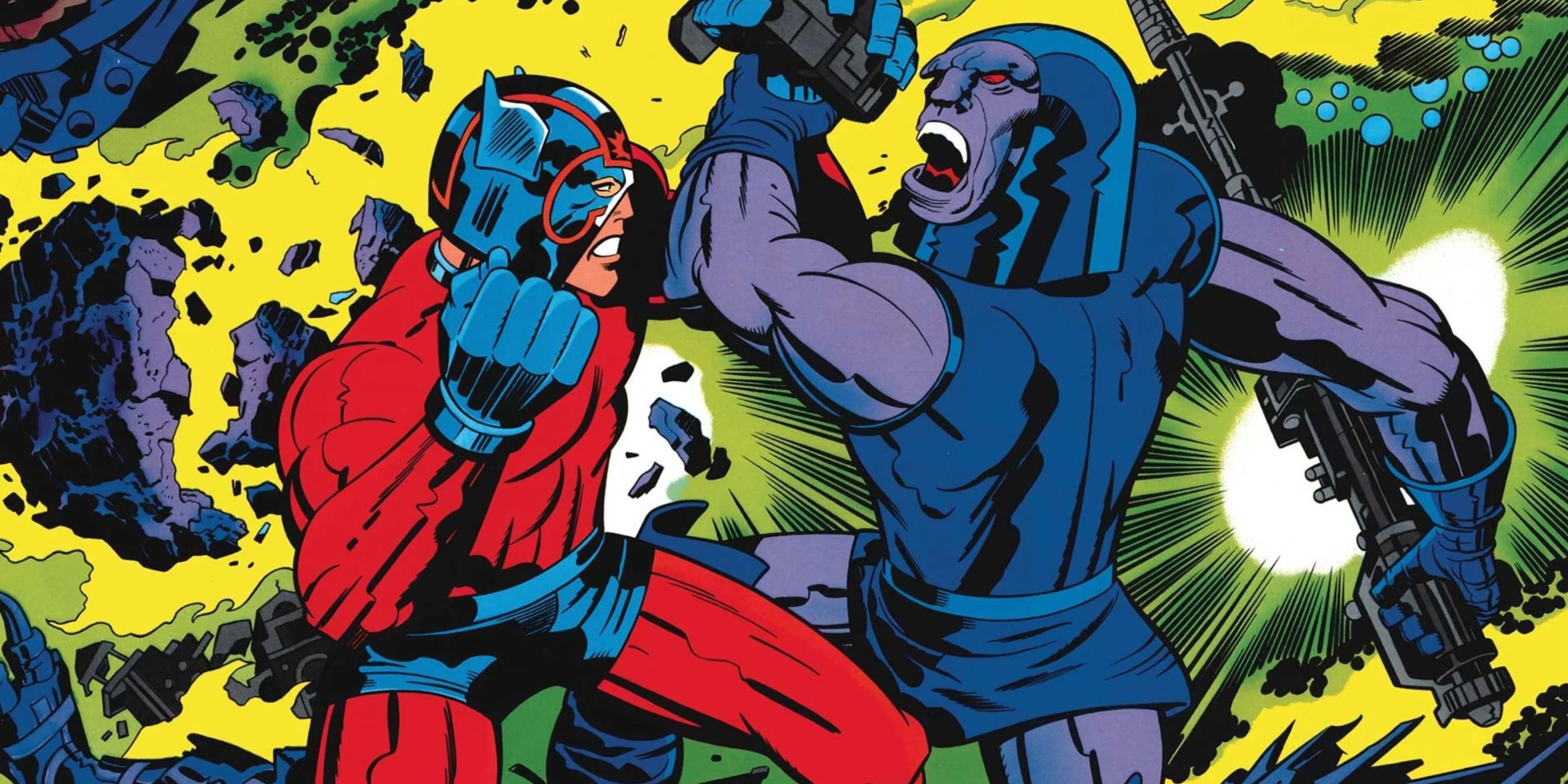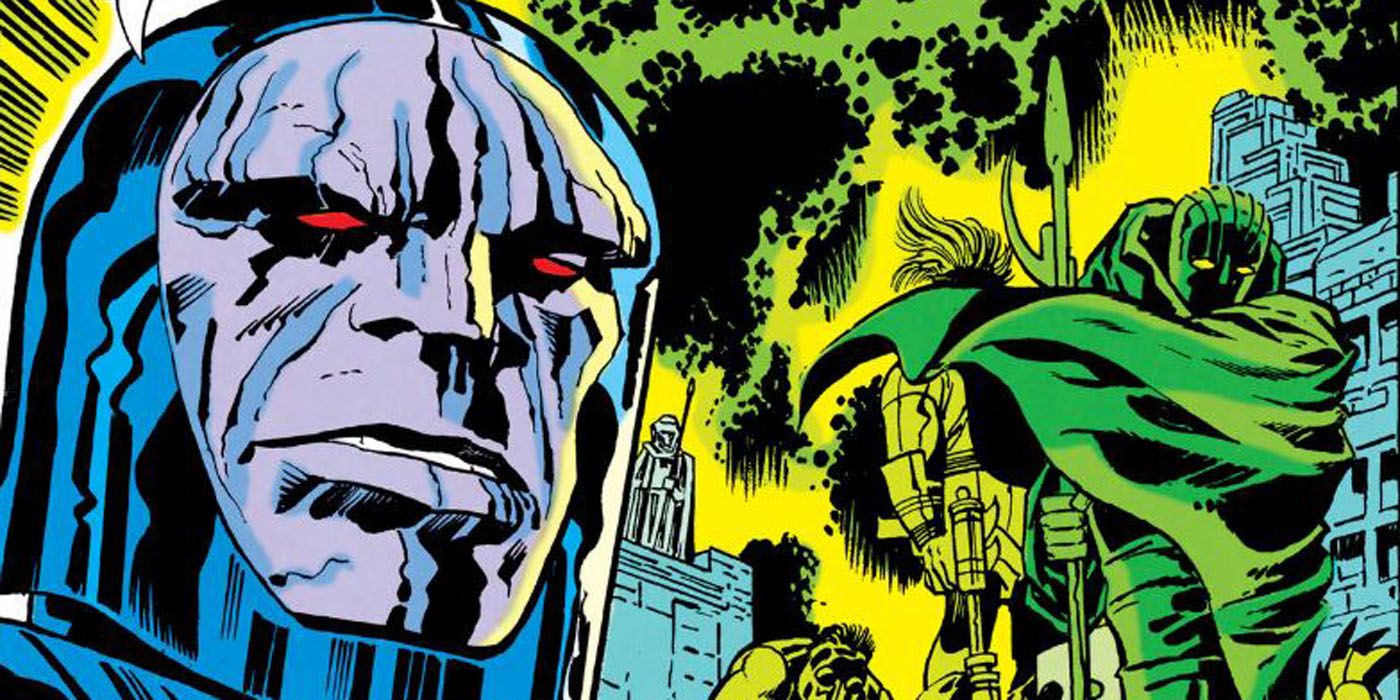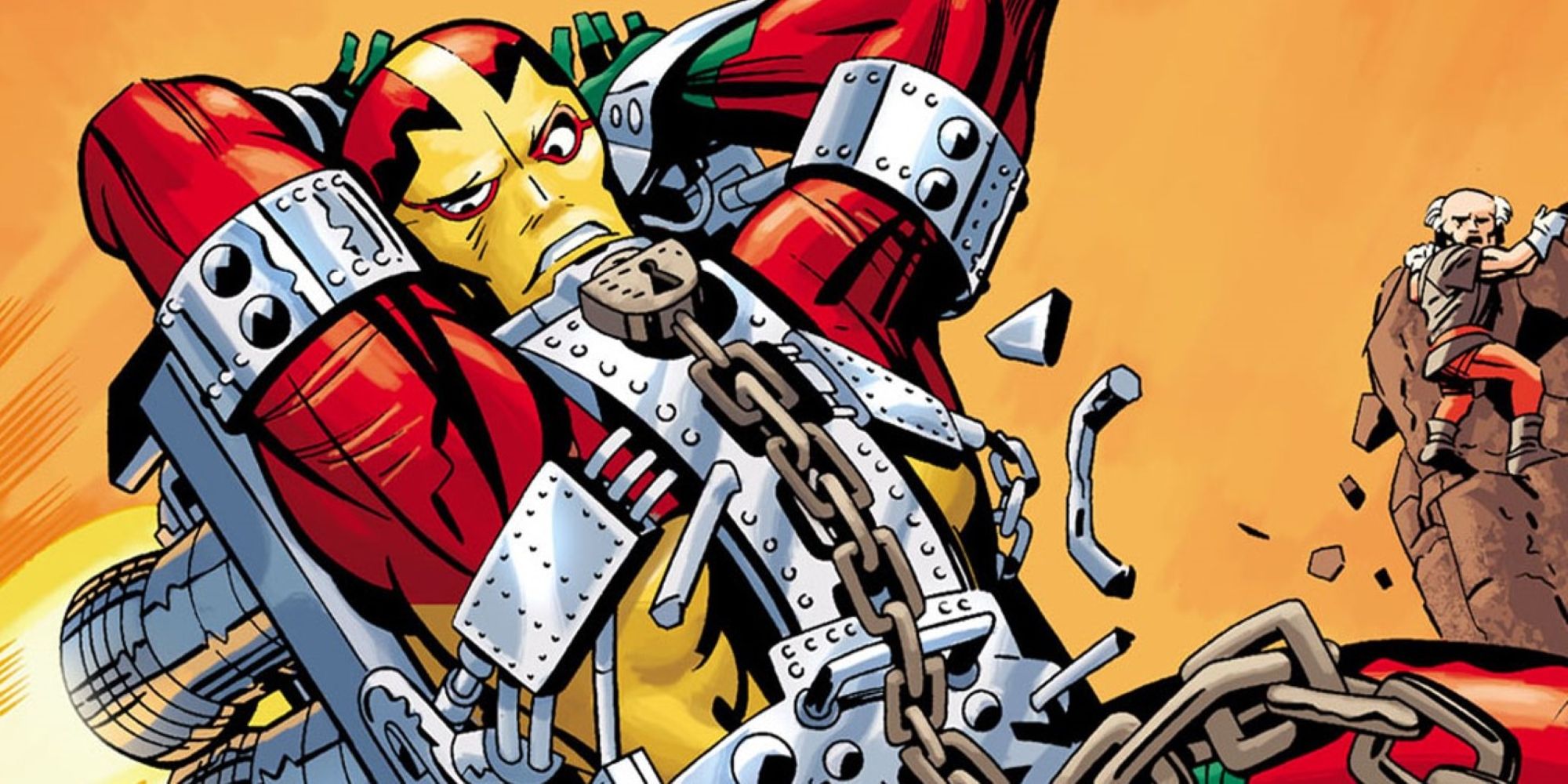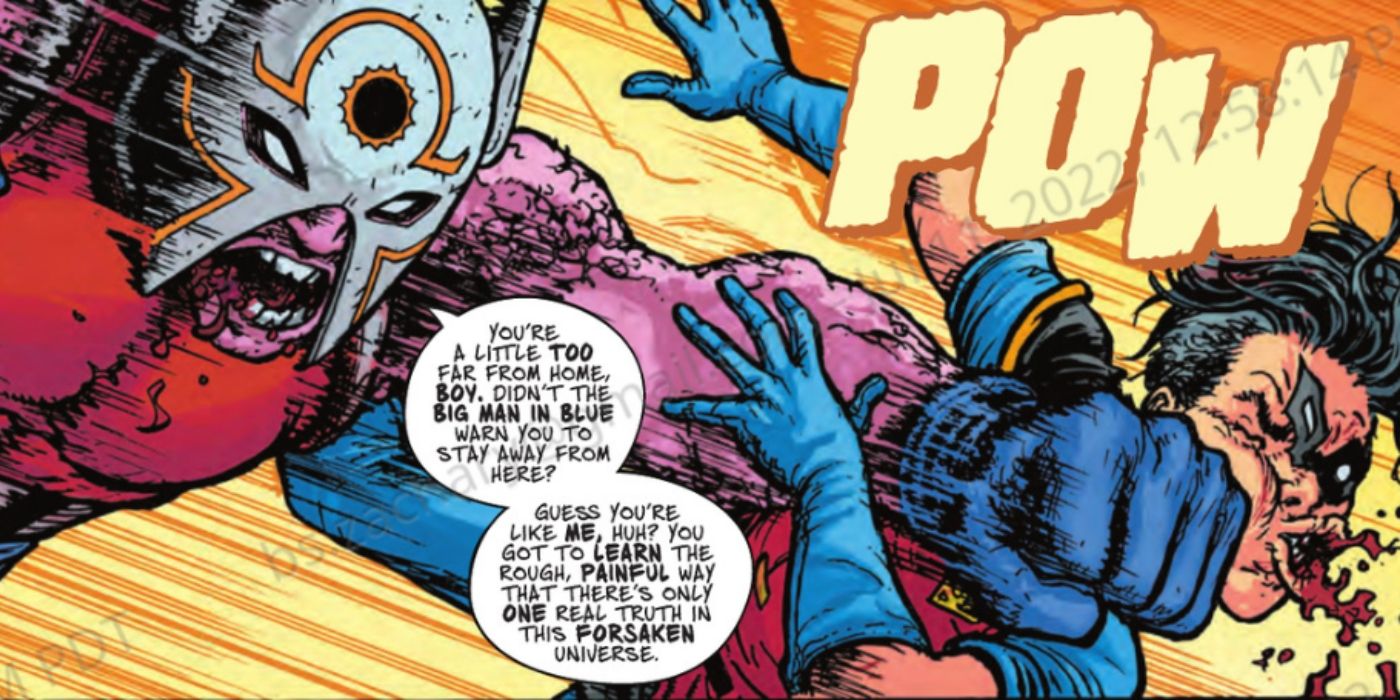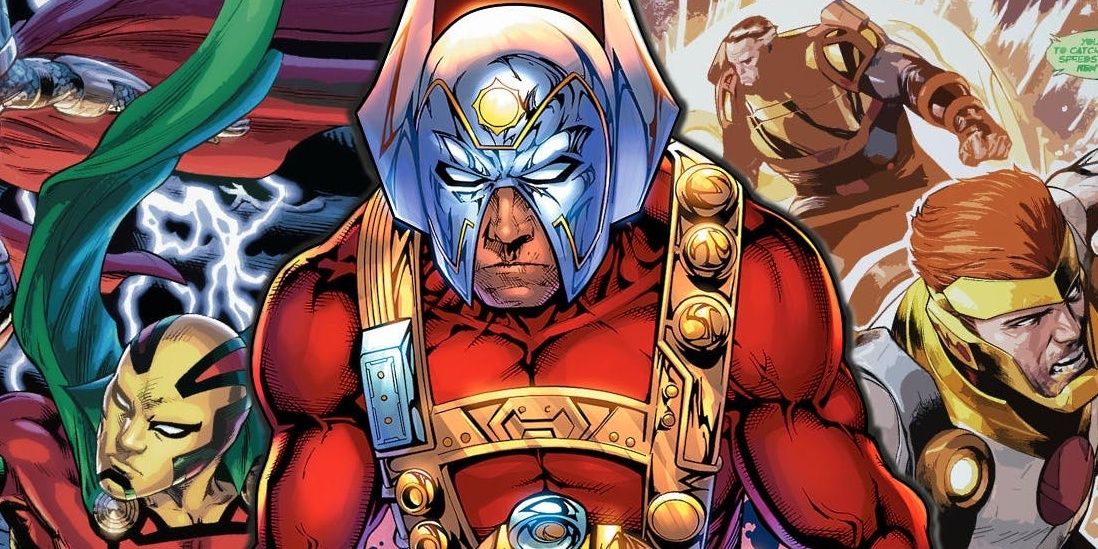Jack Kirby made waves in the comic book industry in 1970 when he left his home at Marvel for the creative freedom being offered to him by DC Comics. Even to this day, the move is one of the most famous creative losses to a competitor in comics, and signified a falling out between Stan Lee and Jack Kirby. At DC, the legendary creator began his Fourth World epic, something in desperate need of a revival in modern DC.
Jack Kirby left Marvel in 1970, though his first DC works didn’t release until 1971. His Fourth World, billed as “an epic for our times” by DC, introduced readers to the bitter war being fought across the cosmos by the forces for good on New Genesis and the vil minions of Darkseid. Like with the best of Kirby’s work, he pulled from ancient mythology, religion and history to craft this epic saga. The Fourth World introduced such classic DC characters as Darkseid, Orion and Mister Miracle, all playing a key role in the saga. These characters, thanks to their godhood, became some of DC’s most powerful beings, and have gone on to play key roles in important arcs for Superman and the Justice League. The ongoing and never-ending epic has always struggled to hold the spotlight at DC Comics. It’s time for that to change and for readers to see more of the war between Orion and Darkseid.
Jack Kirby’s New Gods, Explained
The New Gods were one of Jack Kirby’s first creations at DC, and formed the flagship title in his Fourth World saga. The story takes place in the far reaches of space, and follows an ongoing war between the just heroes of New Genesis and the evil forces of Darkseid’s Apokolips. These beings were formed in the shadow of a cataclysmic struggle between the Old Gods, with their ruination leaving the two planets in their wake. Connected to the Source (a mysterious energy that exists beyond the universe), these New Gods evolved into their powers, with all of them becoming immortal and immensely strong. Both worlds and their leaders are mirror images of one another, with Highfather representing the life-powered “Alpha” and Darkseid the anti-life “Omega.”
The New Gods takes place between Earth and the two worlds, with heroes like Orion and Lightray driving much of the story in their protection of Earth from Darkseid’s forces, namely his son, Kalibak. In many ways, New Gods closely resembles the work Kirby did on Marvel’s Thor, and Highfather even resembles Odin and New Genesis is evocative of Asgard. While the heroes did have adventures on Earth, a reader could still be forgiven for reading the original Kirby series and assuming it held its own continuity. The likes of Dan Turpin and Jimmy Olsen did feature in the Fourth World series, but they weren’t part of the grander conflict between the planets. If anything, they were surrogates for the reader to act as a bridge between the epic nature of the war between the gods and the simpler life on Earth.
After their ascension to godhood, the brothers Darkseid and Highfather, with their opposing natures, struck a truce between their worlds. The two leaders exchanged sons, with Orion going to live with Highfather on New Genesis and Scott Free being sent to Apokolips. Though Orion was trained up to become a protector of his adoptive home, Scott toiled in the torture of Apokolips under the “care” of Granny Goodness. Eventually, he managed to escape, shattering the delicate peace between the worlds and throwing them back into a state of war. Though many think of the conflict as that of Darkseid vs Highfather, it’s actually Orion who leads the conflict on behalf of New Genesis. This undying struggle between father and son is what really makes the book as compelling as it is.
The New Gods In Modern DC
Since Kirby finished his New Gods saga with The Hunger Dogs, the world has been left open to exploration by other creators, like Gerry Conway and Walter Simonson. These series typically made a point of tying the New Gods in with the regular superhero continuity more than Kirby’s series had, by showing team-ups with the Justice League and Superman. Recently, the beings played a role in Geoff Thorne’s Green Lantern series, where John Stewart ascended to godhood himself, using his newfound powers to energize the Corps. The story teased scenes of the greater battle between New Genesis and Apokolips — some of the book’s best moments — but still played down the role they could have had.
Typically, the New Gods are all presented to DC fans independently of the greater conflict. Instead of stories that focus on the war between New Genesis and Apokolips, readers are more likely to see a solo Orion story, Kalibak on the streets of Metropolis or Darkseid battling the Justice League. This is a far cry from what Jack Kirby intended with his original series, which was, for the most part, self-contained. While the likes of Orion and Mister Miracle have faded from their height, Darkseid remains the most successful of all the New Gods when it comes to both print and other media, like animation.
The New Gods’ versatility has been shown in every Justice League or other superhero arc where they appear, such as JLA’s “World War Three” and The Darkseid War. The characters almost broke out into the mainstream when it was revealed Ava DuVernay and Tom King were set to collaborate on a New Gods movie for the DCEU. This, however, was scrapped as a part of DC’s new creative direction under James Gunn. It’s safe to say, in some ways, that the New Gods have a Darkseid problem. In having built up the villain as such a major, almost all-powerful threat, showing him in an evenly-matched fight with Orion risks diminishing him in the eyes of some fans. This has certainly contributed to the constant fixations on Apokolips at the expense of New Genesis and its heroes.
How To Handle New Gods
The current field of DC talent is arguably the best it has been for some New Gods stories since Kirby’s own series. Writers and artists like Phillip Kennedy Johnson, Daniel Warren Johnson, Walter Simonson and Ram V could all bring their unique styles to the battle between Orion and his evil father. The dark spin on cosmic high fantasy requires a delicate touch, but these creators have all demonstrated an uncanny aptitude for this level of storytelling and science fiction. Reading the adventures of the New Gods should feel like the peak of books like Thor and X-Men at their Bronze Age heights. However, even if a full New Gods mythos is off the table, characters like Orion are always perfect for a solo story.
While the temptation may exist to have the New Gods head to Earth, so they can cross over with Superman or Batman, or even Green Lantern, letting the epic saga speak for itself is key. Fans of the New Gods have always been onboard for exploring these vastly different worlds and getting a better look at the cultures and characters on them. Many of the New Gods could always use more fleshed out characterization, and the book has the benefits of being one series naturally suited to the modern trend of decompression. In worlds as dynamic as these, slower-paced stories allow readers to soak in the planets themselves and get to know characters in an in-depth manner. This could all build towards the cosmic fantasy the series needs to be, far from the street-level adventures they’re used to.
How The New Gods Can Be So Much More
The New Gods continue to exist in DC, but have fallen into the role of supporting characters. Orion and Kalibak show up in Superman stories, Darkseid in Justice League tales and sometimes in Green Lantern. The fact that the most in-depth look at the New Gods mythos in recent years came with 2014’s Godhead — almost a decade ago — shows just how obscure they have become. Even this story relied on a crossover with the mega-success of Green Lantern at the time to really pull it off. If anything, the New Gods could reach their fullest potential by removing themselves from the events of Earth, and focusing on a genuine, world-building fantasy action story.
In terms of modern and classic culture, New Gods is Game of Thrones, The Bible and Norse mythology and more all rolled into one, with a cosmic, science fiction twist. Though they may be gods, many of the characters of New Genesis and Apokolips still sport traditional superhero / super villain designs. This epic saga presents the company with a great way to diversify their genres without straying too far from the superhero aesthetic that defines their universe. Kirby wanted his series to be a new mythology unto itself, and honoring that freedom is key to reviving the characters and letting them be as the King imagined them.
